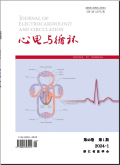Lession Seventy-eight J-Wave syndromes:Emerging concepts
The J-wave syndromes (JWSs), consisting of the Brugada syndrome (BrS) and early repolarization syndrome (ERS), have captured the interest of the cardiology community over the past 2 decades following the identification of BrS as a new clinical entity by Pedro and Josep Brugada in 1992. More recently, accentuation of the J wave has been associated with life-threatening ventricular arrhythmias. Under these circumstances, the accentuated J wave typically may be so broad and tall as to appear as an ST-segment elevation, as in cases of BrS. In humans, the normal J wave often appears as a J-point elevation, with part of the J wave buried inside the QRS. An early repolarization pattern(ERP)in the ECG, consisting of a distinct J-wave or J-point elevation, or a notch or slur of the terminal part of the QRS with and without an ST-segment elevation, has traditionally been viewed as benign. The benign nature of an ERP was challenged in 2000 based on experimental data showing that this ECG manifestation predisposes to the development of polymorphic ventricular tachycardia (VT) and ventricular fibrillation(VF)in coronary-perfused wedge preparations1. Validation of this hypothesis was provided 8 years later by Haissaguerre et al, Nam et al, and Rosso et al.
ventricular fibrillation、ventricular tachycardia、identification of、experimental data、Brugada syndrome、nature of
36
TN ;R5
2017-08-17(万方平台首次上网日期,不代表论文的发表时间)
共5页
282-286






